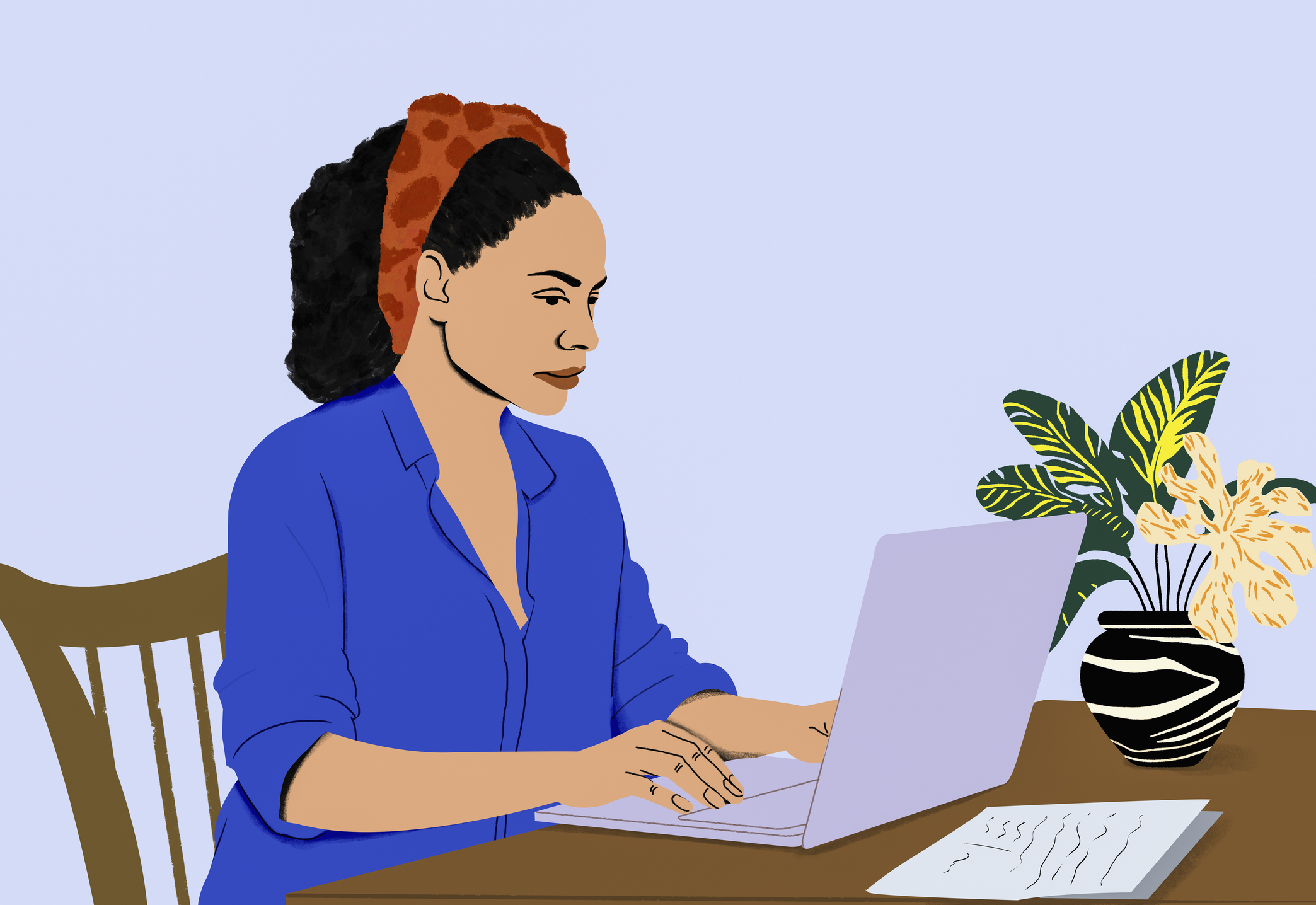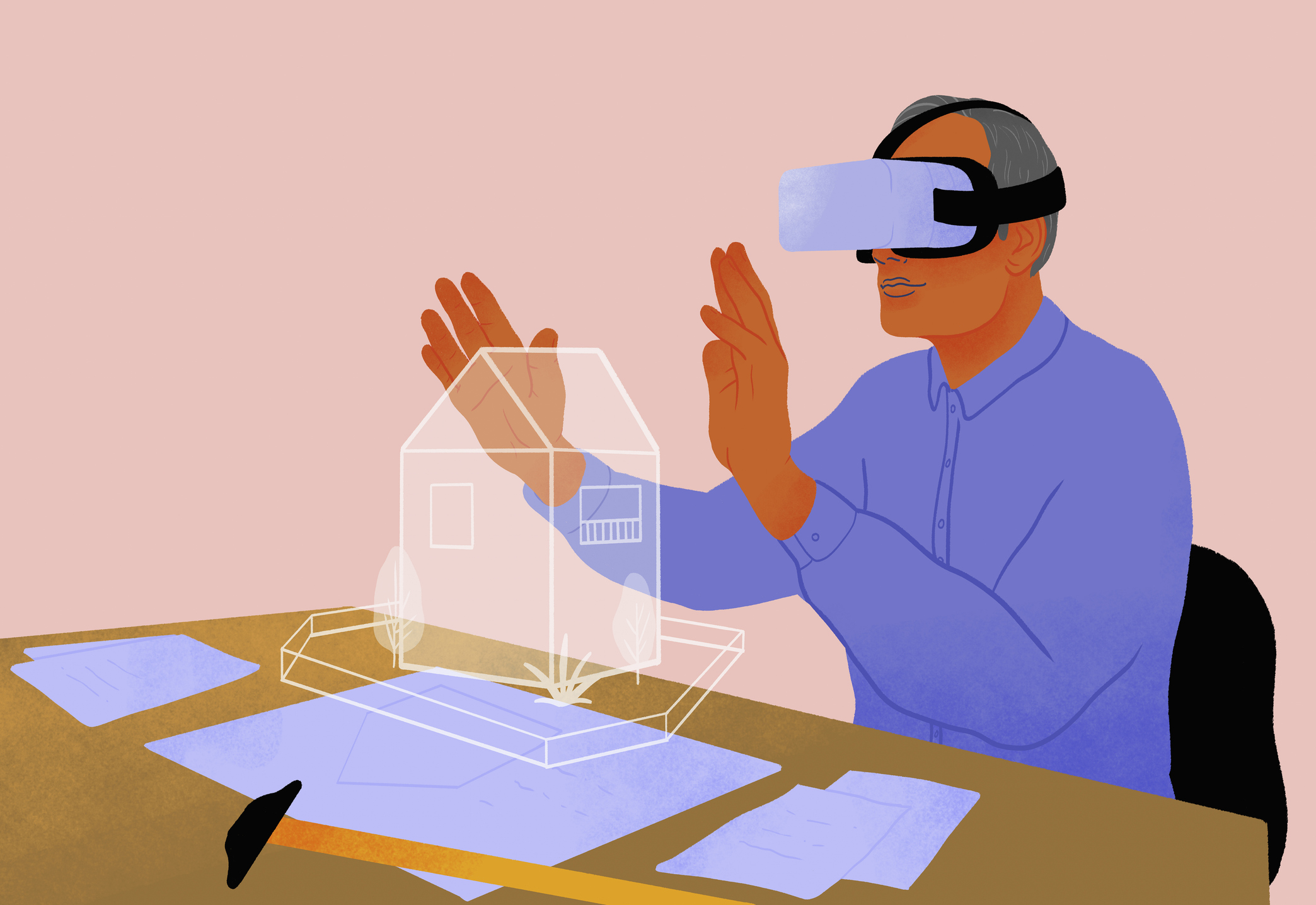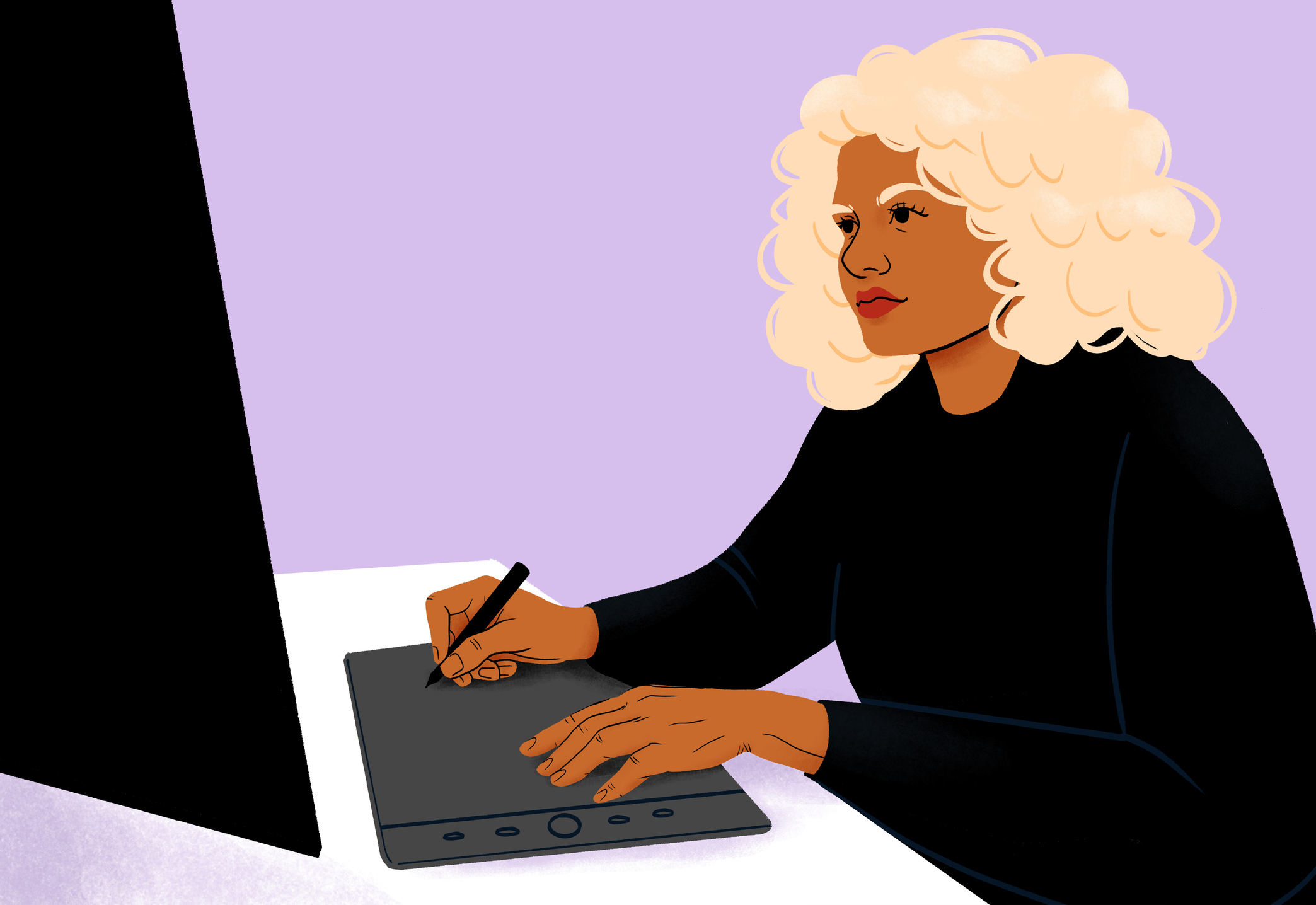'It's a genie out of the bottle': How AI is impacting graphic design

The creative industries continue to evolve at pace, as advances in tech and the troublesome topic of AI impact the work that is being produced, how and by who (or what). With AI tools now more widely accessible and with more capabilities, many creatives are rethinking what they offer to clients, assessing the new skills they need to develop, mastering new software, considering emerging roles, and even going back to basics to offer a human touch in the face of all the new technology.
Based on predictions in the World Economic Forum’s Future of Jobs report, graphic design will be the 11th fastest declining job in 2025-2030. The report, produced every two years, asks employers which jobs they predict will grow and decline the fastest over the next five years. The previous report said that graphic design was considered to be a moderately growing job, and researchers now link its new uncertain status largely to the rise of AI and other emerging tech.
Interestingly, UI and UX design is predicted to be the 8th fastest growing job. Given the continued increase in smartphone and tablet sales and the prioritisation of digital products across all industries, the technical skills needed to create user-friendly interfaces are in high demand.
However, as Terrance Weinzierl, executive type director at Monotype, the two roles – UX/UI design and graphic design – are not distinct disciplines. “How can you define graphic design? It is hard to pinpoint, and in my experience, it changes often,” he says. “I think it’s interesting that graphic design is separated from UI and UX in this scenario. Why is there an imaginary line drawn between traditional graphic design and the digital applications for UI and UX design work? I see them in the same bubble.”
The report points to several macrotrends impacting the world of work – beyond rise of AI and broadening digital access – which include geoeconomic fragmentation and factors shaping business operation, trade and investment; the economic uncertainty and the increasing cost of living; demographic shifts (as different economies see declining or expanding working-age populations); and the green transition and climate-change mitigation.
I spoke with designers and agencies to hear their thoughts on the impact of AI on graphic design as a profession and their concerns and hopes around how it could shape the future of the industry.
Utilising AI as a creative tool
Attitudes towards AI were complex and often conflicted among the creatives we spoke to, but sentiment was more positive than negative overall, particularly when it came to recognising the power of AI as a tool in a creative toolbox or creative co-pilot. “Like most people, we have mixed feelings about AI – change is hard! But change can also be really exciting and we’re both optimists at the end of the day,” Jessica Strelioff and Danielle LaRoy, founders of brand studio Goodside Studio. “We choose to see AI as a tool for creativity, not a replacement. As creatives, it’s our job to constantly learn and evolve alongside new tools, AI being one of them. It’s been fun exploring ways to incorporate AI into our workflows. Instead of using the usual mockup templates for our case studies, for example, we recently used Midjourney to dream up on-brand mockups to showcase our brand work for Superorganism, which elevated the whole project and earned us a lot more buzz for the work itself.”
Daily design news, reviews, how-tos and more, as picked by the editors.
Although AI is already assisting designers with daily tasks, many are finding it also presents significant challenges – given that models are trained on specific dataset that inherently carry biases, for instance. “While the technology is advancing rapidly, the question remains: is there a ceiling to its capabilities?” asks John Owens, creative director Instruct Studio. “Having worked through over 20 years of creative software evolution, I’ve witnessed the transition from analog to digital methods, embracing updates and innovations that have not only accelerated our workflow but also expanded our creative possibilities within the studio,” says John. “These advancements have allowed us to explore new techniques that would have traditionally taken years to master but also appreciate other crafts that contribute to the creative process. I see AI as now part of the creative process, a tool to be learned and integrated into our workflow rather than replacing the role of a graphic designer.”
Digging down into specific design tasks, there are already complex issues at play. “One of AI’s biggest impacts is on the supply chain of creative assets like stock photography, video, voiceover, and even some aspects of 3D design,” John says. “Traditionally, these were commissioned or more collaborative, but AI is making them increasingly accessible and easy to manipulate. This shift could disrupt many professionals in these fields, as clients may expect to pay less or even bypass commissions altogether when AI-generated alternatives are readily available.”
Jessica and Danielle have also experienced challenges that highlight the limitations of the technology. “AI is particularly bad at naming, which is one of our favourite disciplines in the branding arena,” they say. “Like many studios, we’ve adopted some guiding principles when using AI generated tools: don’t use artists’ names when drafting prompts, for one. Looking at the big picture, AI can get really exciting. Imagining a world with better healthcare, smarter food systems, and safer climate responses keeps us inspired.”
The automation of mundane tasks

Whether we like it or not, AI is here, it’s happening – so how can the creative industries retain control, reap the benefits and boost their output?
“I don’t think it's helpful to position ourselves against AI,” says Connor Edwards, designer at Jack Renwick Studio. “I can already see the advantages of AI to speed up more laborious tasks, giving me more time to focus on the part of my job that adds real value; creating big ideas that help people and businesses communicate more effectively and interestingly.”
London-based designer Laura Foley agrees. “Although AI has had both positive and negative impacts on the graphic design industry, it has streamlined many of the mundane tasks such as colour correction, resizing and retouching that were once quite time consuming, which has allowed for more time to focus on strategic and creative thinking.”
Developing these skills in creative and strategic thinking, alongside problem-solving and client interaction – while simultaneously mastering AI design tools to enhance workflow and automate repetitive tasks – is likely to help future proof a career in graphic design.
“The technology is like a genie out of the bottle. It's out there in the world, and there’s no stopping its progression. I hope we can utilise AI to support us with the repetitive ‘grunt work’, freeing up our time to be more creative. It could open the doors for more innovation,” says Abigail Baldwin, director at design agency Buttercrumble.
Designers are used to adapting
Is the impact on design jobs being a little over-egged? As someone who regularly speaks to designers and other industry figures about issues impacting the industry, it’s clear, anecdotally, that overall sentiment is more positive than when AI first crashed the design party. After all, graphic designers are adept at constantly learning and adapting to new trends and techniques in such a rapidly changing industry.
“It’s not the first time graphic designers have had to adapt due to the introduction of technology,” Abigail says. “Due to AI’s growth, there is a lot of uncertainty in the creative industries about the future of our jobs. I think the role of a graphic designer will change, and more will focus on digital applications. As UX and UI design is on the rise, it may become a natural transition for many.”
“Today’s designers are much more versatile, out of necessity, and they will continue to successfully adapt their skills and tools in the era of AI,” Terrance says. “I have a lot of confidence in human ingenuity, and a lot of skepticism in AI applications.”
The opportunity for a human touch
“While AI definitely poses an existential threat for designers in terms of disrupting the ‘old ways’, it only serves to highlight the importance of lived experience, informed taste and (whisper it) a little bit of gatekeeping,” says Dougal Marwick, creative strategist and copywriter at The Touch Agency. “As we head towards an even bigger, flatter future in which all designers (or their scary machine counterparts) rely on the same cookie-cutter tech, tools and templates, the work that feels more crafted, considered and ‘human’ will continue to resonate. That doesn’t necessarily mean cutting and pasting Letraset by candlelight either – there are some incredibly talented tech-forward designers out there – but rather an emotive and engaging approach to creativity.”
Artist vision, emotional depth, imperfection and creative intuition – these are not only valuable human elements of the design process, but also essential to innovation and creating unique, meaningful work.
"I agree with these predictions to a certain extent but I don’t think AI can shape the industry fully. Yes, it’s definitely helped in terms of efficiency for manual and artworking jobs but that’s as far as it goes,” she says Laura. “AI lacks the human qualities that are important to design. Design isn’t just about creating nice work, it’s about telling a story, evoking emotion, and capturing the essence of a brand or message. These elements rely heavily on cultural context, personal experience, and a deep understanding of human behaviour, things AI can’t replicate in the same way a designer can.”
Highlighting the value of a designer

“Design is shaped by countless parameters and decisions,” says John, “and no matter how advanced AI models become, they are ultimately limited by the quality of the models and input they receive and who is doing that input.”
Although AI is increasingly capable of performing knowledge-based work and creative tasks traditionally done by human designers, its ability to innovate and understand underlying human behaviours or motivations is always likely to be limited.
“The camera didn’t cause the death of painting, the computer hasn’t killed craft, and for my money, Aardman is still producing some of the best animated films going. So with that in mind, I’m not too worried that AI will put an end to graphic design as we know it,” Connor says. “Advancements in technology may make clients think ‘AI can do this quicker and cheaper’ and that may soon be true. So, we need to continue to show our value. We need to know how to use emerging tools to aid the work we do. We need to bring our expertise to the table so that we can confidently say AI may be quicker and cheaper – but not better.”
Designer’s will need to remember to consider the client’s viewpoint throughout the design process, while potentially increasing transparency around the process and a focus on creators. “I have concerns about how AI is shaping perceptions of design,” Laura says. “Clients often see the final product and as a result overlook the design process and strategic thinking that go into it. There’s also the risk that the distinction between human made and AI generated design is blurred which could affect the perceived value of the work.”
As the digital landscape becomes more crowded and noisy, the skills of great designers will help them to stand out. “AI will settle into some places nicely, and it won’t stick in others. In other words, I think we are at the top of the ‘Peak of Inflated Expectations’ on the Gartner Hype Cycle. Mass adoption of gen AI tools will produce a lot of junk,” says Terrance. “I’m hopeful and bullish that AI will help us filter and sort all of our junk, but it’s only as good as its training. In the era of AI abundance, I think curation, art direction, and critical thinking skills will be necessities. Good designers already have these.”
Design is becoming more inclusive
“I hope that, as AI is so accessible, it may open doors for creatives from underprivileged backgrounds to bring their ideas to life and enter the industry from less conventional routes,” says Connor “Without advancements in technology, I wouldn’t be a graphic designer today, so It would be pretty selfish of me to think that technology should stop advancing at the point where I’m comfortable."
AI can also be used to increase accessibility in design for people with disabilities, with generative AI and open source visualisation tools offering opportunities to unlock inclusive experiences. For instance, users of assistive technology may benefit from text-to-speech and image-to-text explanations, allowing users to grasp intricate visual information, which in turn will, importantly, enable people with disabilities to join in conversations around design, and even offer better access to career paths in design.
Ownership and regulation
“AI needs to be regulated more strictly to address issues with inaccuracies and potential legal concerns surrounding the ownership of AI generated work” Laura says.
The emergence of these powerful new tools promises many benefits, but also comes with debates around intellectual property and copyright laws. Many of these models are trained on vast quantities of human-authored work, collected from online sources, without permission. In the last few years, lawsuits are being filed and legal systems are in a state of flux when it comes to dealing with these issues. The focus of laws may turn to the visual aspects of a design, rather than authorship, to tackle the unique issues that AI imagery presents.

Antonia Wilson is a freelance writer and editor. Previous roles have included staff writer for Creative Review magazine, travel reporter for the Guardian, deputy editor of Beau Monde Traveller magazine, alongside writing for The Observer, National Geographic Traveller, Essentialist and Eco-Age, among others. She has also been a freelance editor for Vogue and Google, and works with a variety of global and emerging brands on sustainability messaging and other copywriting and editing projects — from Ugg and Ferragamo to Microsoft and Tate Galleries.
You must confirm your public display name before commenting
Please logout and then login again, you will then be prompted to enter your display name.
